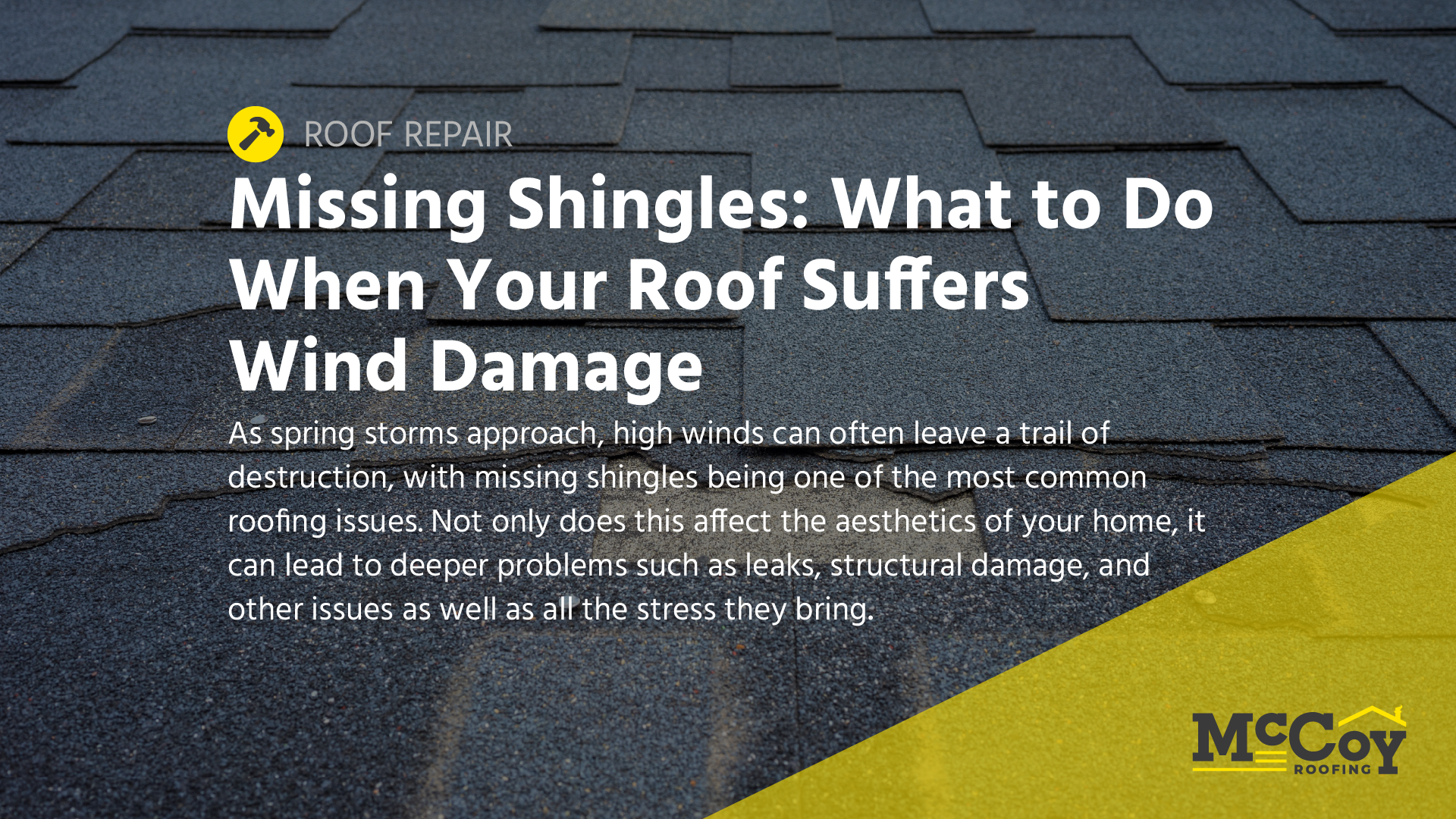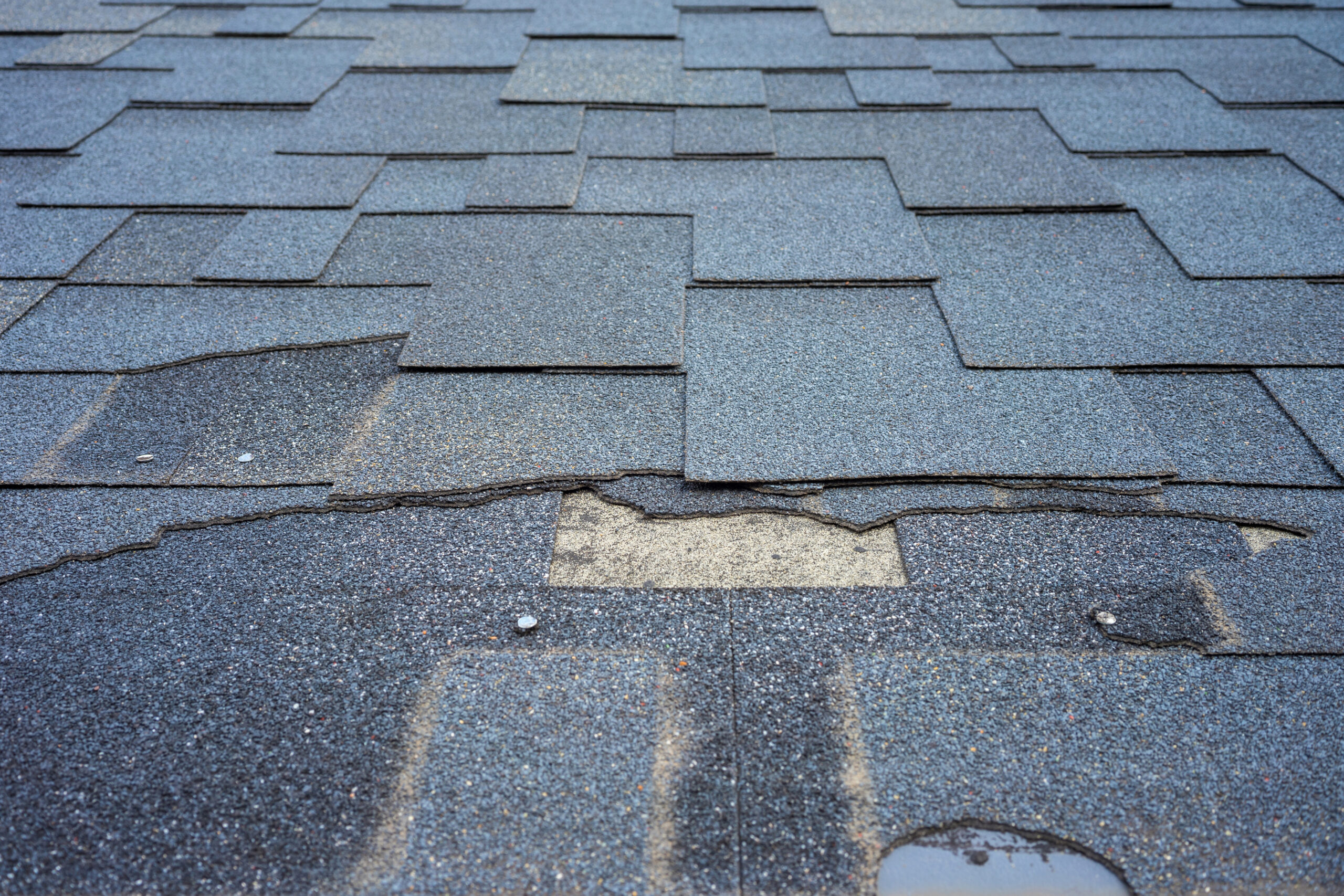

Missing Shingles: What to Do When Your Roof Suffers Wind Damage
As spring storms approach, high winds can often leave a trail of destruction, with missing shingles being one of the most common roofing issues. Not only does this affect the aesthetics of your home, it can lead to deeper problems such as leaks, structural damage, and other issues as well as all the stress they bring.
If you notice that your roof is missing shingles after a storm, it’s essential to address the problem quickly to prevent further damage. In this article, McCoy Roofing Operations Manager Paul Browne will explore the main cause of missing shingles, how to assess the damage, and what your options are for repairs or insurance claims.

Why Are Shingles Missing from My Roof?
“Missing shingles are almost always caused by high winds,” explains Paul. “If you notice that there are missing shingles on your roof, you need to take into consideration the make and model of the shingle, the age of the roof, the approximate time of the shingle blowing off, and the strength of the wind that blew them off.”
The first thing Paul recommends is to determine if your shingles are still under the manufacturer’s warranty. If the wind speed that caused the damage is below the shingle’s designated wind rating, you may be able to open a warranty claim with the manufacturer. This could help you replace the missing shingles at no cost, as long as you are within the warranty period.
However, if the shingles are out of warranty or the wind speed exceeded the shingle’s rated capacity, you have two options:
1. Replacing Missing Shingles Out of Pocket
If your roof is no longer under warranty or the damage exceeds what’s covered, you will need to replace the missing shingles yourself. Most homeowners will need to pay for this repair out of pocket, which is often less than the cost of the insurance deductible.
2. File an Insurance Claim for Roof Repairs
If the damage is extensive and the cost of the repair exceeds your deductible, a temporary fix for missing shingles would be to place a tarp over the exposed area and file an insurance claim. In this case, an insurance adjuster will inspect the damage and provide an estimate for repairs.
“It is always highly advisable that the roofer be present at adjuster inspections to help ensure that all damage is noted,” Paul adds.
Once the adjuster completes their inspection, the insurance company will send a preliminary estimate for the repair costs. If the cost of the repairs is higher than the initial estimate, the roofer can send a supplement for the remaining balance to be paid for the work done.
The Insurance Process for Roof Repairs
Filing an insurance claim for roof damage can be a detailed process. Here’s a simple step-by-step overview:
- File the Insurance Claim: Contact your insurance provider to report the damage and initiate the claim.
- Schedule the Adjuster Inspection: The insurance company will send an adjuster to inspect the roof damage. Make sure your roofer is present during this inspection to help document all of the damage.
- Review the Preliminary Estimate: After the inspection, the insurance company will send a preliminary estimate. This may cover part or all of the repair costs.
- Request a Supplement if Necessary: If the cost of repairs exceeds the estimate, your roofer can submit a supplement, which shows the additional costs, to cover the remaining balance. You will still be responsible for paying your deductible to the roofer.
Remember, in cases of insurance claims, the homeowner will need to pay their deductible directly to the roofer, who will then handle the rest of the claim process with the insurance company.
How to Prevent Missing Shingles
While you can’t always control the weather, there are some preventive measures you can take to reduce the risk of losing shingles in a storm:
- Regular Roof Inspections: Have your roof inspected at least once a year to identify any vulnerabilities that could cause shingles to lift or come loose.
- Properly Maintain Flashing: Make sure that the flashing around vents, chimneys, and skylights is intact and properly sealed to prevent wind from getting under the shingles.
- Upgrade to Impact-Resistant Shingles: Consider installing impact-resistant shingles, which are designed to withstand higher wind speeds and can help reduce the likelihood of missing shingles after a storm.
Is Your Roof Ready for Spring Storms?
As the weather warms up, it’s crucial to ensure your roof is in good shape. Missing shingles are just one of many roofing issues that can arise after a storm. By staying proactive and understanding the roof repair process, you can protect your home and minimize the cost of repairs.If you’ve noticed missing shingles or any other roofing issues, McCoy Roofing is here to help. Call us today at (402) 616-7304 for a free roof inspection, and our expert team will ensure your roof is prepared for whatever weather comes your way.